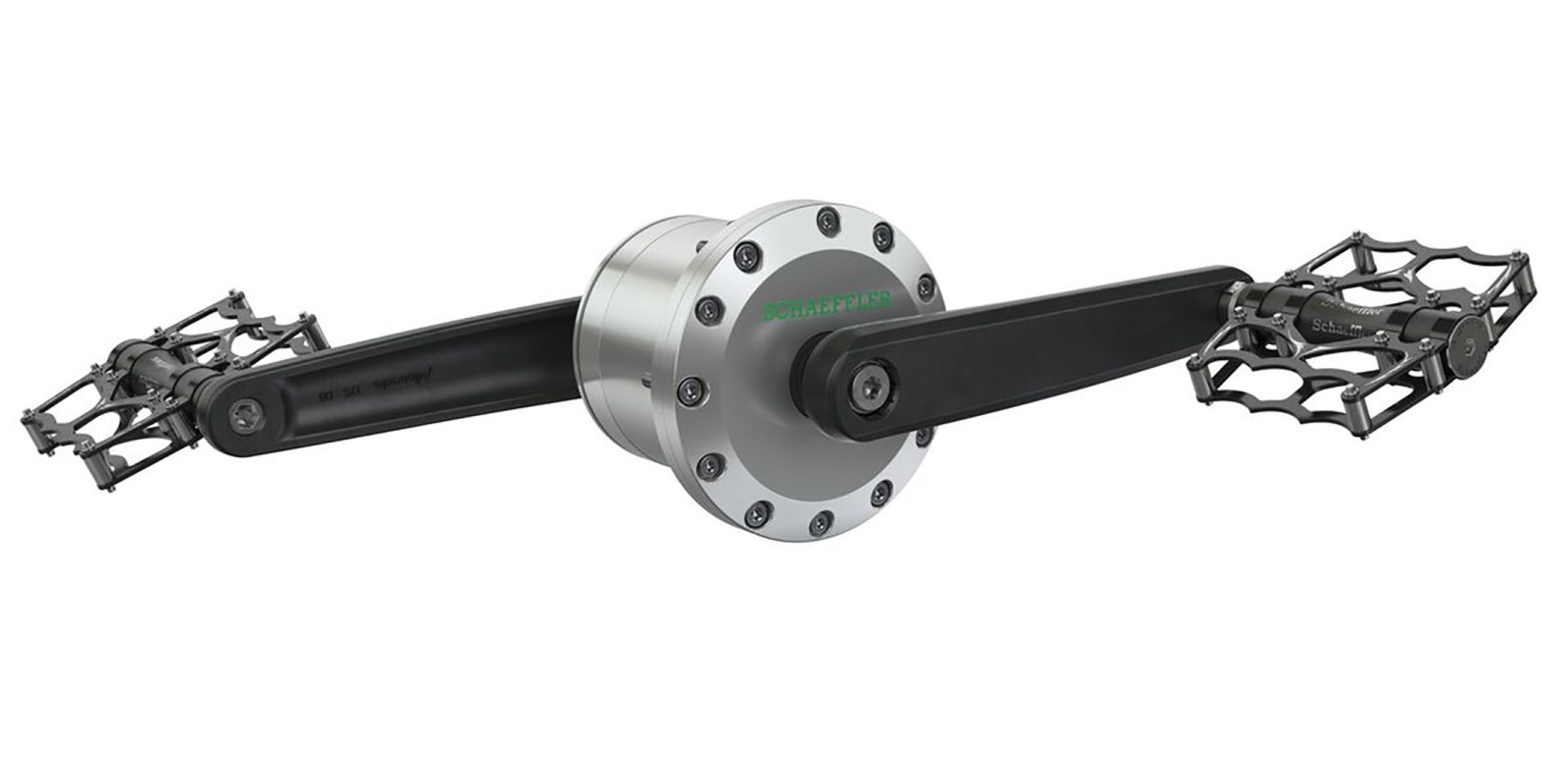Radical new ride-by-wire electric bike drivetrain with no chains or belts begins production

A year and a half ago, we broke the news about a wild new drive system for electric bikes that lacked any mechanical connection between the pedals and wheels. The Free Drive system, created by a partnership between German companies Schaeffler and Heinzmann, is now finally entering production.
The post Radical new ride-by-wire electric bike drivetrain with no chains or belts begins production appeared first on Electrek.
A year and a half ago, we broke the news about a wild new drive system for electric bikes that lacked any mechanical connection between the pedals and wheels. The Free Drive system, created by a partnership between German companies Schaeffler and Heinzmann, is now finally entering production.
The design essentially turns electric bikes into a different style of hybrid vehicle.
In a sense, most electric bicycles are already hybrids, though they’re what is known as parallel hybrids. The electric drivetrain that is powered by a battery and the meat drivetrain that is powered by a sandwich can both independently operate the e-bike, either alone or simultaneously.
The two drive systems thus work in parallel and aren’t necessarily connected.
But a series hybrid like the Free Drive system from Schaeffler and Heinzmann is different. It lacks any physical mechanical connection between the pedals and the wheels. Instead, it places the electric and mechanical drivetrains in series, meaning the rider’s pedaling power is converted to electricity that flows through wires to power the motor and ultimately turn the wheels. You can’t use one without the other.
To achieve this, an electric generator is mounted at the pedals. The rider turns the generator instead of a chainring, which converts that kinetic energy into electrical energy. That electricity flows to the motor and gets converted back into kinetic energy to power the bike. Any additional electricity that is generated above what is needed by the motor gets stored in the battery. The battery can also be charged via a wall outlet, which is the more likely scenario.
While the Free Drive system has multiple uses, cargo bikes seem to be one of the main applications. Most cargo bike designs are limited by the need to create a long tunnel for a bicycle chain to reach the rear wheel or gearbox. But the Free Drive allows cargo bikes to be designed differently, lowering the floor or deck and creating a much more stable platform that isn’t constrained by the bike’s mechanical drivetrain requirements.
And with electric cargo bikes increasingly filling important roles as replacements for delivery vehicles in cities around the world, making these e-bikes more efficient has major implications.
As Schaeffler AG CEO Automotive Technologies Matthias Zink explained:
We need to rethink mobility for tomorrow’s cities. Electric cargo bikes fill an important gap here, particularly in last-mile goods delivery.
Cargo e-bike manufacturers are already lining up to purchase the new system, which is expected to begin rolling out on new e-bikes later this year.
I had a chance to test out an early prototype of the Free Drive in 2021 on a trip to Germany, and it was a wild ride. While it wasn’t quite as refined yet (apparently it has received significant design updates), it was still a fascinating feeling to pedal a motor instead of a chain or belt.
You can take a look at my testing of the Free Drive in the Eurobike 2021 video below. Start at around the 36-second mark to see the Free Drive — though I think the whole video is worth a watch!
FTC: We use income earning auto affiliate links. More.


